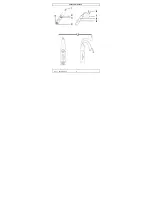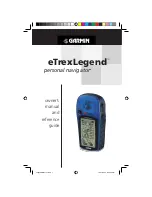
V. 01 – 15/01/2013
5
o
If the CONT indicator [8] does not light, one or both of the
wires are broken, or the wrong wires were connected or short
circuited.
Caution: Make sure the pair of wires under test is not in contact
with any other electrified or earthed object, as this may cause an
incorrect result.
4.2
Cable Detection / Test
Use both the tone generator and the cable tracker to verify where a
cable is going, if it is interrupted or not and where the interruption is
located.
1.
Set the tone generator's mode switch [9] to TONE.
The TONE indicator [8] starts flashing.
2.
At one end of the cable / wires to be tested, connect the red clip
to any wire or one specific wire you want to test. Connect the
black clip to the ground wire or, if you cannot find it, one of the
other wires.
3.
Use the volume control [2] on the side of the cable tracker to
control the volume.
4.
Use the probe tip [1] of the cable tracker as follows:
o
If you do not know where the cable is going or if there are
several similar cables, you can detect the correct one with the
probe. Hold the probe to the suspected wire and press the
trace button. The signal is the loudest at the correct wire.
o
If you do know where the cable is going, the probe allows you
to verify immediately at the other end whether or not the
cable is interrupted. Hold the probe to the end of the wire and
press the trace button. If no signal is obtained, the test wire
is probably interrupted.
o
Press and hold the trace button [3] and follow the cable to
where the signal stops: the signal wire is interrupted at that
point.
Remarks:
•
The best test results are obtained when the black clip is connected
to a separate ground wire.
•
The probe is very sensitive: as it gets nearer the signal wire, the
tone gets louder.
•
Electric fields may interfere with the detection of the signal wire.
8820 CABLE TRACKER
























